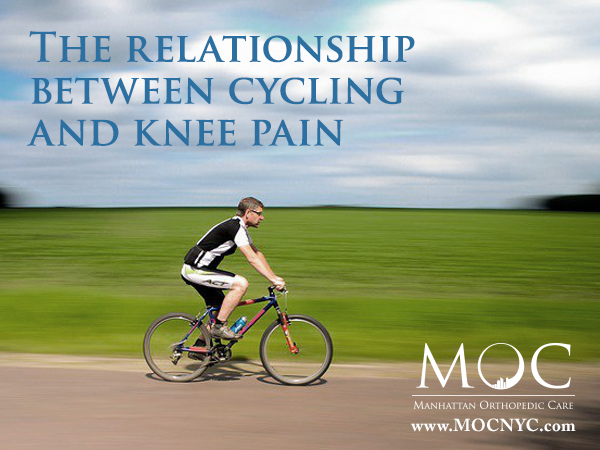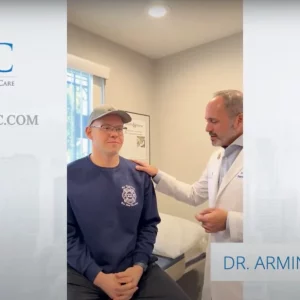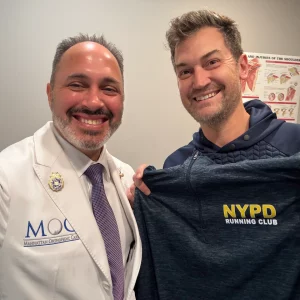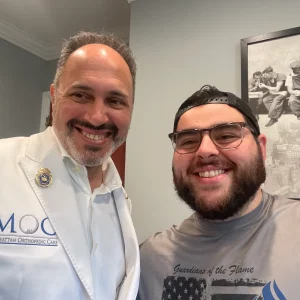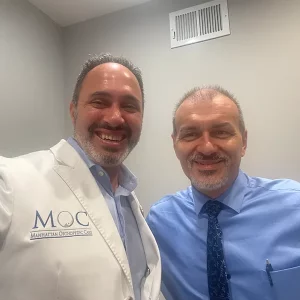The Relationship Between Cycling and Knee Pain
Avid cyclists don’t bike because they’re forced to – they do it because they love it. Few can deny the rush that comes from conquering a new trek, crushing a seemingly impossible mountain trail or the euphoric feeling of flying down the same mountain on the other side.
If you know any avid cyclists, you have likely heard epic tales of their cycling adventures. You have probably also heard them moan about the accompanying physical pain. One of the most common complaints you’ll hear from a cyclist isn’t about their feet, hands, or even their legs – it is their cycling knee pain. In fact, 60 percent of all cycling injuries occur in the knees.
If you are a rider yourself, you know this to be all too true. The relationship between cycling and knee pain is undeniable, and the reason is in part because of the nature of the bicycle itself: the repetitive nature of pedaling puts constant pressure on your knees that may cause inevitable discomfort from sheer overuse. A cyclist pedals an average of 5,000 strokes an hour, equaling one million pedal strokes every 200 hours per knee.
Minor discomfort aside, it only takes a small bicycle misalignment to add unnecessary stress to the knees while cycling, which can lead to more serious injuries if not corrected.
Cycling knee pain is usually felt in either the front, back or sides of the knees, also known as medial knee pain. While there are many causes of knee pain from biking, a common culprit is the improper mechanical setup of the bicycle itself. This means that making a few experimental adjustments can largely alleviate the pain.
Cleat Positioning
For instance, an incorrect positioning of your cycling shoe’s “cleat,” or the piece inserted into the bottom of bicycle shoes that connects to the pedal, can cause excessive internal tibial rotation, resulting in medial knee pain. This comes in the form of either incorrect placement or incorrect rotation.
Improper cleat placement is usually from mounting your cleats too closely to the inside edge of the sole of your shoe. To fix this, move the cleat further outwards to shift your pedal pressure more towards the center of your knee joint.
Meanwhile, overly external cleat rotation causes your toes to be rotated too far outward and your heels to be rotated too for inward, also resulting in a slightly skewed pedal stroke and eventual knee pain. A cleat adjustment that brings your toes back in towards the bike may be all that is needed to fix this.
Saddle Positioning
A common cause of front and back knee pain is incorrect saddle, or seat, positioning. Having your seat positioned too far back or too high will result in pain behind the knee, while a seat too far forwards or too low can cause front knee pain. Experiment to see which feels best for you and your leg length.
Other Causes
For some, the specific body’s anatomy could lend to a higher risk of knee pain while cycling, such as those with pronated or flat feet. Sheer overexertion is another surefire way to cause knee pain while cycling. Whether you are riding in gears that are too high with too low of a cadence, climbing too many strenuous mountains or simply training too hard or too often, your knees will feel it and they will not thank you for it. Listen to your body, and do not push further than it can handle.
When in doubt, do not shy away from speaking with an orthopedic expert with experience in diagnosing knee pain. The knee joint is the largest and most complex joint in the entire body and knee injuries can lead to months of recovery time off your bike. As long as you take the time to ensure proper mechanical setups before taking a long trek and know when to slow down and stop, nothing will stop you from making new cycling adventures.















